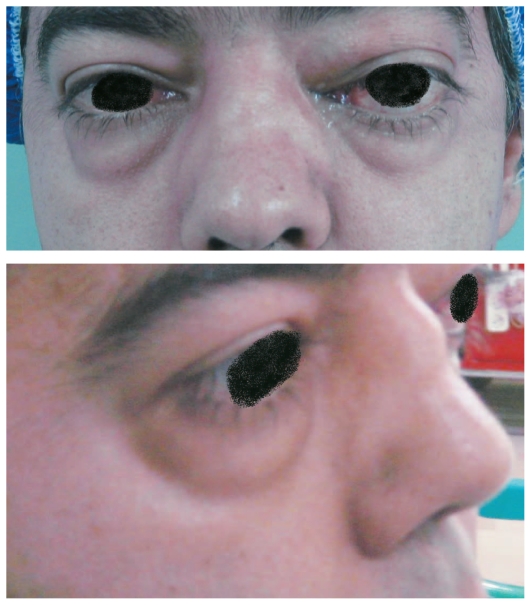Playlist
Show Playlist
Hide Playlist
Antineutrophil Cytoplasmic Antibodies and Cell-mediated Vasculitis – Vasculitis
-
Slides Vasculitis Mitchell.pdf
-
Reference List Pathology.pdf
-
Download Lecture Overview
00:01 So, immune complex mediated arteritis include things like polyarteritis nodosa. 00:08 That's in the medium to large size vessels all the way over on the left-hand side. 00:13 Small vessel vasculitis that has a similar pathogenesis, etiology, include things like a lupus vasculitis, systemic lupus erythematous, SLE vasculitis, or IGA associated vasculitis that is Henoch-Schonlein purpura, or other sorts of vasculitides due to antibodies binding. 00:35 In that case, Goodpasture's disease where the antibodies are actually directed against a component of the basement membrane. 00:43 Okay, so those are examples. 00:44 We'll spend more time talking about the specifics at the back end of this talk. 00:49 All right, a third kind of pathogenic mechanism to think about. 00:54 So, we've had antiendothelial cell antibody, we had immune complex deposition. 00:58 There's an entity called antineutrophil cytoplasmic antibodies, so called ANCA, antineutrophil cytoplasmic antibodies. 01:08 These ANCA antibodies can be elaborated after a variety of infections or other triggers. 01:14 And what they do is bind to cytoplasmic components of neutrophils. 01:20 In particular, proteinase 3, PR3, and myeloperoxidase. 01:25 And you're thinking, okay, now, these are normally cytoplasmic antigens. 01:29 How are they getting on the surface? Well, when a neutrophil gets activated, it can actually have translocation of a number of proteins to the cell surface. 01:38 Now, we have an antibody against PR3 or antibody against myeloperoxidase that's on the surface of a neutrophil, and it come along with an antibody and bind to it, wow. 01:48 Now, I'm going to really turn on that neutrophil. 01:52 We're going to activate complement, but we're also going to have Fc receptor interactions even on the same cell. 01:59 And so, that's going to drive a pretty profound inflammatory response. 02:04 So, again, we have some sort of trigger. 02:07 We develop antibodies against PR3 or myeloperoxidase. 02:10 Those bind to neutrophils. The neutrophils also - as they translocate these contents to the surface, can also deposit them on various other surfaces such as the endothelium. 02:23 So, we can have now antibodies bound to the endothelium as well, because of the PR3 or myeloperoxidase that have glommed onto the endothelium. 02:32 In any event, we're going to get activation of the neutrophils. 02:34 We're going to get activation and injury of the endothelial cells as a result of the antibody binding. 02:40 And then, we're off and running. Same process. 02:43 Complement fragments, Fc receptor bearing cells, et cetera, giving rise to a vasculitis. 02:49 So, examples of the ANCA associated vasculitides include now vasculitis without asthma or granulomas. 02:59 That's microscopic polyangiitis, kind of in the middle top of your screen. 03:03 There are granulomas without asthma or Wegener's granulomatosis. 03:08 And then, there's vasculitis associated with eosinophils, asthma, and granulomas, otherwise known as Chrug-Strauss syndrome. 03:16 So, that's an example of ANCA associated vasculitides. 03:21 Okay, we built up our repertoire. There's one more. 03:24 So, we've had antiendothelial cell antibodies, immune complex antibodies, ANCA antibodies. 03:31 What about just a typical cell mediated vasculitis? Well, indeed, there are cell mediated injury of vessel walls just like everything else. 03:40 So, lymphocytes can be targeted to antigens that are expressed in various parts of the vessel wall from endothelium to smooth muscle cells and even adventitial cells. 03:50 When those lymphocytes identify their particular antigen, so they get activated, will recruit and activate additional mononuclear cells, monocytes, and macrophages. 04:01 And then, we're off and running. 04:03 They will elaborate mediators that will cause the formation of granulomas. 04:08 Activated nodules epithelioid macrophages, but also profoundly activate the lymphocytes and macrophages that are there. 04:16 Elaborating cytokines, reactive oxygen species, proteases, et cetera, that cause damage to the vessel wall. Boom. 04:23 Vessel wall is damaged, and now we have the same process. We have a vasculitis. 04:28 Now, due to T cells, T lymphocytes that are directed against antigens of the vessel wall, an example of this, over on the left-hand side at the bottom, are granulomatous diseases such as Takayasu's arteritis and giant cell arteritis, and we'll talk a little bit more in specifics later.
About the Lecture
The lecture Antineutrophil Cytoplasmic Antibodies and Cell-mediated Vasculitis – Vasculitis by Richard Mitchell, MD, PhD is from the course Vasculitis.
Included Quiz Questions
What is a common target of antineutrophil cytoplasmic antibodies?
- Myeloperoxidase
- Cathepsin K
- Proteinase 13
- Elastin
- Lactoferrin 13
What is a specific histologic finding seen with cell-mediated vasculitis?
- Multinucleated giant cells
- Contraction band necrosis
- Rosette
- Pseudorosette
- Platelet-fibrin emboli
Customer reviews
5,0 of 5 stars
| 5 Stars |
|
5 |
| 4 Stars |
|
0 |
| 3 Stars |
|
0 |
| 2 Stars |
|
0 |
| 1 Star |
|
0 |




